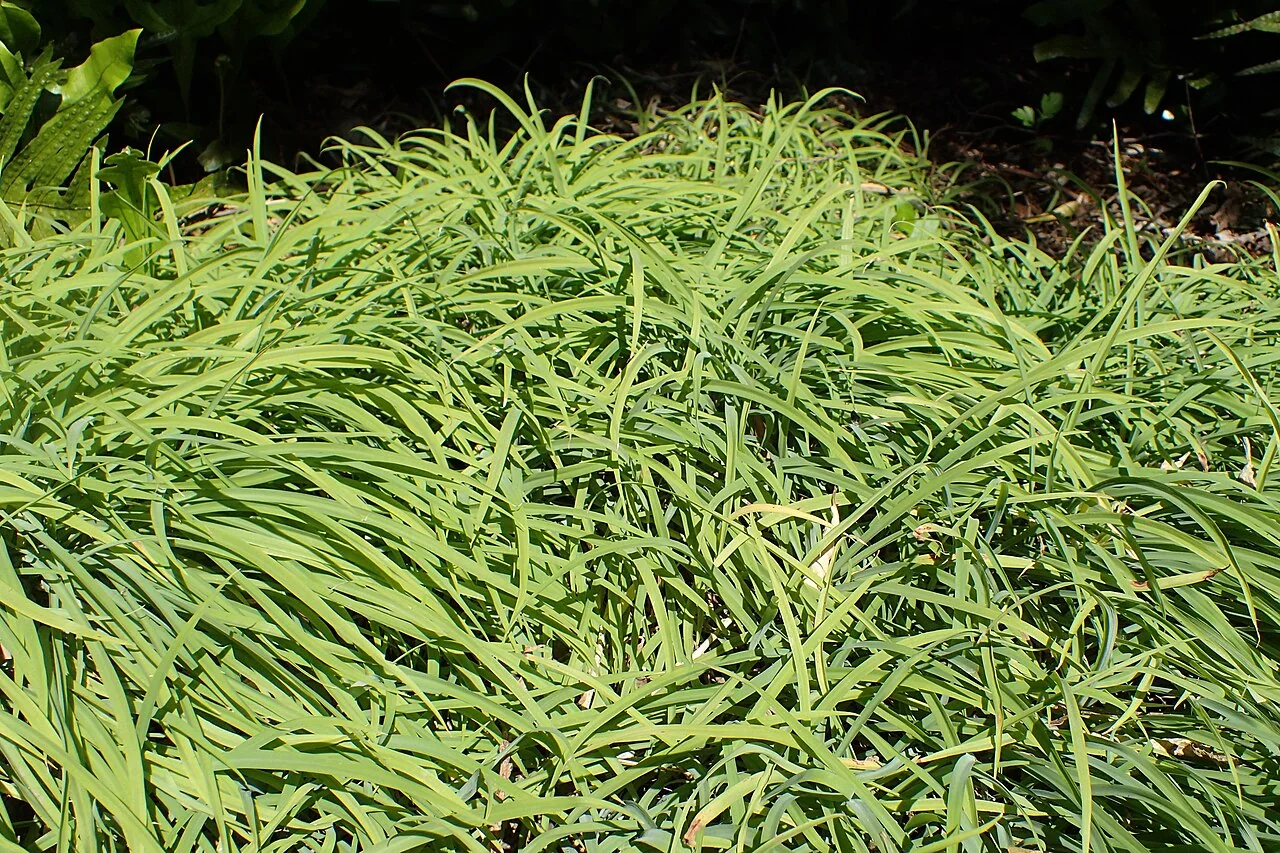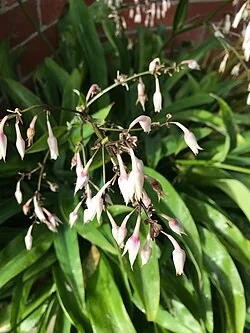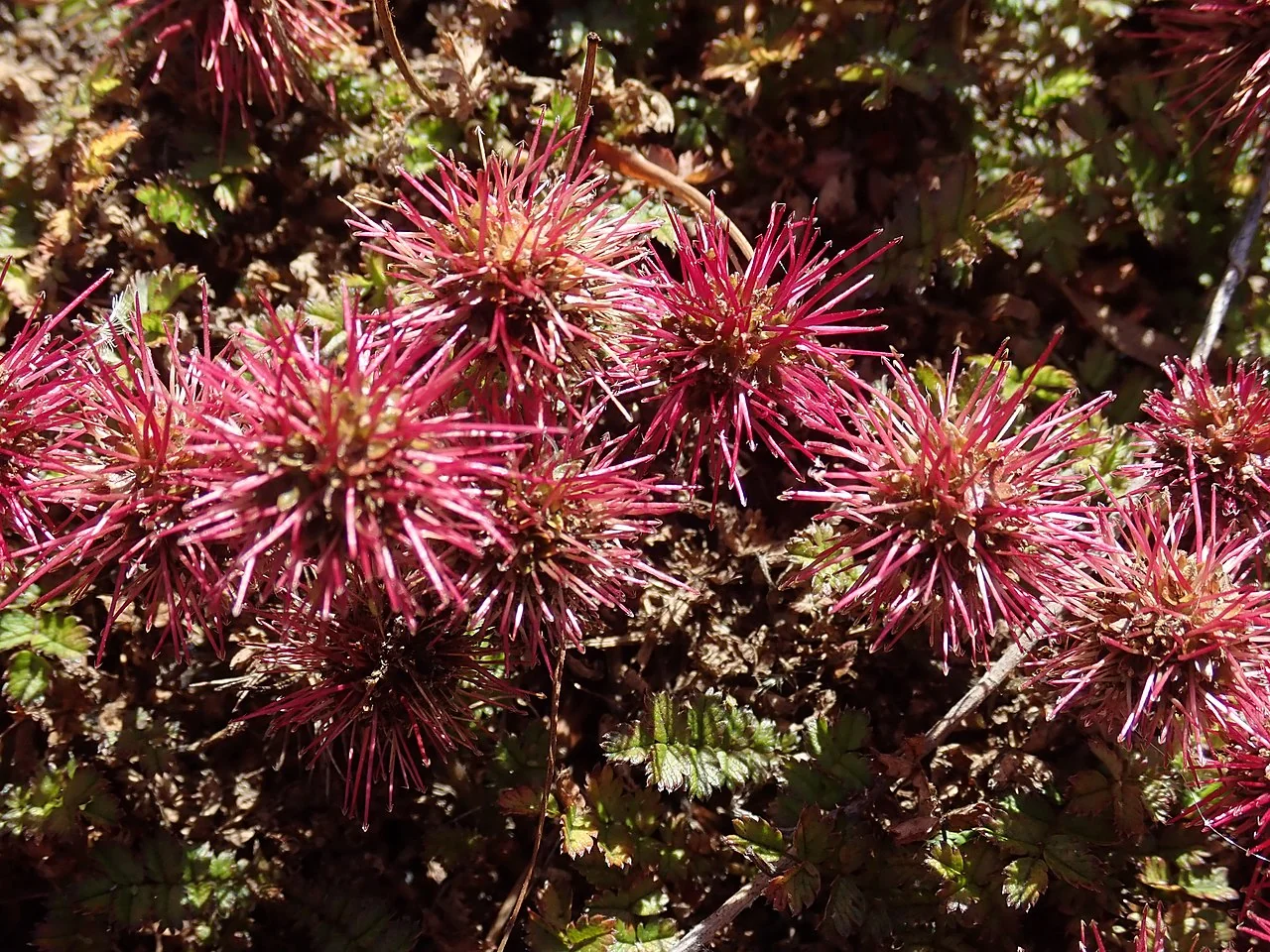
Dwarf Rock Lily
Arthropodium candidum
Explore more NZ native plant guides in our index .
Introduction
Overview
Arthropodium candidum , commonly known as Dwarf Rock Lily or Renga Lily, is a charming perennial herb native to New Zealand. It forms small clumps of grass-like foliage and produces delicate white, star-shaped flowers on slender stalks in spring and summer. This resilient plant is well-suited for rock gardens, borders, and containers, adding a touch of elegance to any landscape.

Plant Description
Physical Characteristics
Arthropodium candidum , commonly known as Dwarf Rock Lily, is a charming and resilient perennial herb native to New Zealand. It forms compact clumps of narrow, grass-like foliage, typically growing to a height of 10-30 cm and spreading 10-20 cm wide. The leaves are linear, dark green, and often have a slightly arching habit, creating a neat, tufted appearance.
In spring and summer (from October to January), the plant produces delicate, star-shaped white flowers, sometimes with a hint of pink or purple, borne on slender, wiry stems that rise above the foliage. These airy flower stalks can reach up to 30 cm in height, creating a graceful, cloud-like effect. The flowers are typically followed by small, round seed capsules.
A distinctive feature of Arthropodium candidum is its small, white, tuberous roots, which are edible and were traditionally consumed by Māori. These tubers also aid in the plant's resilience, allowing it to store nutrients and moisture, and contribute to its ease of propagation through division.
The plant's compact size and fine texture make it an excellent choice for various garden applications, from rock gardens and borders to containers and groundcover in shaded areas.
Quick Facts
Essential Plant Information
| Scientific Name | Arthropodium Candidum |
|---|---|
| Height | 10-30 cm |
| Spread | 10-20 cm |
| Water Needs | Moderate; prefers consistently moist soil |
| Light | Partial shade to full sun |
| Frost Tolerance | Moderate |
| Salt Tolerance | Low |
| Growth Rate | Moderate |
| Lifespan | Perennial |
Climate Best Suited to
Arthropodium candidum is found in a variety of habitats throughout New Zealand, including coastal areas, lowland forests, and rocky outcrops. It prefers a mild, temperate climate with consistent moisture.
Regional Suitability
| Whangārei | Ideal |
| Auckland | Ideal |
| Hamilton | Suitable |
| Rotorua | Suitable |
| Tauranga | Ideal |
| Gisborne | Ideal |
| New Plymouth | Ideal |
| Whanganui | Ideal |
| Palmerston North | Suitable |
| Napier | Ideal |
| Wellington | Ideal |
| Nelson | Ideal |
| Christchurch | Suitable |
| Dunedin | Suitable |
| Invercargill | Suitable |
| City | Climate Suitability |
|---|
Natural Habitat
Native Environment and Distribution
Dwarf Rock Lily ( Arthropodium candidum ) is endemic to New Zealand, where it is found across both the North and South Islands, primarily in coastal to lowland areas. Its natural habitat provides crucial insights into its preferred growing conditions and ecological role.
- Geographical Distribution: Widespread throughout New Zealand, particularly in coastal and lowland regions, extending into montane areas in some parts.
- Preferred Environmental Conditions: Thrives in a variety of well-drained sites, including rocky outcrops, cliffs, forest margins, and open grasslands. It is often found in areas with good air circulation and consistent moisture, but not waterlogging.
- Typical Associated Plant Communities: Commonly grows alongside other small native herbs, grasses, and ferns in open or semi-shaded environments. It can be found in coastal scrub, broadleaf forests, and on rocky banks.
- Soil Preferences: Adapts to a range of soil types, from sandy coastal soils to richer forest loams, provided they are well-drained. It benefits from soils with some organic matter.
- Altitude: Typically found from sea level up to around 800 meters, showcasing its adaptability to different elevations.
Its resilience and adaptability to various microclimates within these habitats contribute to its success as a garden plant, as it can tolerate a range of conditions if its basic needs for drainage and moisture are met.
Plant Conservation
Threats and Efforts
Dwarf Rock Lily ( Arthropodium candidum ) holds a national conservation status of "Not Threatened" in New Zealand, reflecting its widespread presence and adaptability. However, this status can vary regionally, with some areas classifying it as "Regionally Endangered" due to localized pressures.
While not a species of immediate national concern, conservation efforts for Arthropodium candidum are important at a local level. These efforts often focus on protecting its natural habitats from development and managing invasive species that could outcompete it. Its ease of propagation from seed and division makes it a valuable species for restoration projects and for increasing biodiversity in native plant gardens. By cultivating and appreciating this resilient plant, individuals can contribute to its ongoing conservation and the preservation of New Zealand's unique flora.
Growing Requirements
Soil Requirements
Prefers well-drained, fertile soil with a good organic content.
Light Requirements
Grows best in partial shade but will tolerate full sun if the soil is kept consistently moist.
Water Requirements
Requires consistent moisture, especially during dry periods. Do not allow the soil to dry out completely.
Planting Guide
-
When to Plant
Plant in autumn or spring.
-
Site Preparation
Choose a partially shaded site with well-drained, fertile soil.
-
Planting and Aftercare
Dig a hole twice the width of the pot. Place the plant in the hole and backfill with soil. Water well and apply a layer of mulch.
Ecological Role
Native Ecosystem Importance
The ecological importance of Dwarf Rock Lily ( Arthropodium candidum ) within its native ecosystem is significant. This section explores its role in supporting biodiversity, its interactions with local wildlife, and its contribution to the overall ecological balance of its habitat.
- Contribution to local biodiversity.
- Interactions with native fauna (e.g., birds, insects).
- Role in ecosystem health and stability.
Uses and Significance
Garden Uses
- An excellent plant for rock gardens, borders, and containers.
- It can also be used as a ground cover in shady areas.
Cultural Significance
Traditional Uses and Values
The small, white, tuberous roots of Dwarf Rock Lily ( Arthropodium candidum ) were traditionally harvested and eaten by Māori. The plant was also used in rongoā (traditional Māori medicine) for various ailments.
Landscaping Applications
Garden Design Integration
Discover how Dwarf Rock Lily ( Arthropodium candidum ) can be effectively integrated into various landscaping designs. This section offers creative ideas and practical advice for using this plant to enhance the beauty and functionality of your outdoor spaces, from residential gardens to public parks.
- Design ideas for different garden styles.
- Best uses in various landscape settings.
- Combining with other plants for aesthetic appeal.
Seasonal Care Calendar
Spring
- Apply a balanced fertilizer and a layer of mulch.
Summer
- Water regularly, especially during dry periods.
Autumn
- No special care required.
Winter
- Protect from heavy frosts.
Pruning and Maintenance
Simple Care Requirements
Arthropodium candidum generally requires minimal pruning. The primary task involves removing spent flower stalks after blooming to encourage further flowering and maintain a tidy appearance. Additionally, regularly remove any dead or yellowing leaves by hand to promote plant health and vigor. This simple care routine helps the Dwarf Rock Lily thrive.
How to Grow Dwarf Rock Lily
Division
Division is the most reliable and straightforward method for propagating Dwarf Rock Lily, taking advantage of the plant's natural tendency to multiply rapidly through small white underground tubers. This bulbous perennial produces numerous offsets that can be easily separated to create new plants identical to the parent. The optimal timing for division is during the plant's dormant period in late autumn to early spring, when the grass-like foliage has died back and the small tubers are most easily located and handled. Begin by carefully lifting the entire clump with a garden fork, taking care not to damage the delicate tuber system. Gently shake off excess soil to reveal the network of small white bulbs connected to the main plant. Each tuber that shows signs of growing points or small shoots can be separated to form a new plant. Use clean, sharp tools if necessary to cut through any connecting tissue, ensuring each division has both roots and at least one growing point. The small tubers are remarkably resilient and establish quickly when planted in well-draining soil at the same depth they were previously growing. Space divisions 15-20cm apart to allow for natural spreading, and water gently after planting to settle the soil around the tubers. New growth typically appears within 4-6 weeks during favorable growing conditions, and plants will often flower in their first season after division. This method is particularly valuable for maintaining specific cultivars, such as the attractive bronze-leaved forms, as it preserves the exact characteristics of the parent plant while quickly building up stock for larger plantings or garden sharing.
Seeds
Seed propagation of Dwarf Rock Lily is remarkably simple and reliable, with the species producing abundant viable seeds that germinate readily without special treatment or complex protocols. The delicate white star-shaped flowers are followed by small capsules containing glossy black seeds that ripen in late summer to autumn. For best results, collect seeds when the capsules begin to split and the seeds have turned completely black, indicating full maturity. Fresh seeds provide the highest germination rates, though stored seeds remain viable for reasonable periods if kept cool and dry. Sow seeds immediately after collection or in early spring using a well-draining seed-raising mix in shallow trays or small pots. Scatter seeds thinly on the surface and cover lightly with a thin layer of fine sand or vermiculite, no more than 2-3mm deep, as Arthropodium candidum seeds benefit from some light for optimal germination. Maintain consistently moist conditions without waterlogging, and place containers in a bright position with protection from direct sun and temperature extremes. Germination typically occurs within 2-4 weeks under suitable conditions, with tiny grass-like seedlings emerging that closely resemble miniature versions of the adult plant. Allow seedlings to develop for several months before transplanting, ensuring they have formed small tubers and established strong root systems. Young plants grown from seed will typically flower in their second or third year, and often show natural variation in leaf coloration and size. This method is particularly valuable for creating large plantings cost-effectively, and the natural genetic variation in seedlings can sometimes produce interesting new forms or improved characteristics for garden use.
Natural Self-Seeding
Dwarf Rock Lily demonstrates excellent natural self-seeding capabilities, making it an ideal choice for low-maintenance gardening and naturalistic plantings where minimal intervention is desired. Established plants readily produce abundant flowers followed by seed capsules that split open to release seeds in favorable locations around the parent plant. This natural seeding process creates dense, attractive colonies over time without requiring any effort from the gardener. Seeds fall close to the parent plant and germinate during favorable conditions, typically in spring when soil moisture and temperatures are optimal. Self-sown seedlings establish readily in suitable microsites, gradually filling in gaps and creating the natural clumping effect that makes this species so attractive in garden settings. To encourage natural self-seeding, simply avoid deadheading all flowers and allow some seed heads to mature and release their contents naturally. The area around established plants should be kept relatively clear of heavy mulch or competing vegetation to allow seeds to make contact with soil and germinate successfully. Seedlings can be left to establish naturally where they germinate, or carefully transplanted during their first year to more appropriate locations if needed. This propagation method is particularly valuable for rock gardens, border edges, and coastal plantings where the bronze and green forms can establish mixed colonies of varying leaf colours and textures. The self-seeding habit also makes Dwarf Rock Lily an excellent choice for restoration projects and native plant gardens where natural plant communities are desired. Over several seasons, a single plant can generate dozens of offspring, creating spectacular mass displays during flowering periods while requiring virtually no maintenance from the gardener.
Pests and Diseases
Common Issues and Solutions
Dwarf Rock Lily ( Arthropodium candidum ) is generally a robust and low-maintenance plant, exhibiting good resistance to most common pests and diseases. However, like all plants, it can occasionally encounter issues, particularly if not grown in optimal conditions.
- Root Rot: The most common issue for Arthropodium candidum is root rot, which occurs primarily in poorly drained soils or due to overwatering. Symptoms include yellowing foliage, wilting, and a general decline in plant vigor. To prevent this, ensure the plant is in well-draining soil and avoid excessive watering, especially during cooler months.
- Slugs and Snails: Young plants and tender new growth can sometimes be susceptible to damage from slugs and snails. These pests can chew holes in leaves and stems. Monitor for their presence and use appropriate organic or chemical controls if necessary.
- Aphids: Occasionally, aphids may infest new shoots and flower stalks, sucking sap and causing distortion. A strong jet of water or an application of insecticidal soap can usually manage minor infestations.
- Lack of Vigor/Poor Flowering: This is often a symptom of insufficient light or nutrients. While tolerant of partial shade, too much shade can reduce flowering. Ensure the plant receives adequate light and consider a balanced liquid feed during the growing season.
Overall, maintaining good cultural practices, such as providing well-drained soil, appropriate light, and consistent moisture, will help keep your Dwarf Rock Lily healthy and minimize the risk of pest and disease problems.
Bonus Tip
Edible Tubers and Culinary Use
A fascinating bonus tip for Arthropodium candidum is its edible tubers. While not widely known, the small, white, potato-like tubers found at the base of the plant were traditionally harvested and consumed by Māori. These tubers are a testament to the plant's resilience and its historical role as a food source.
If you're cultivating Dwarf Rock Lily and wish to explore its culinary potential, ensure you have identified the plant correctly and that it has been grown in a safe, pesticide-free environment. The tubers can be gently dug up, cleaned, and cooked in a similar manner to small potatoes. This unique aspect adds another layer of appreciation for this versatile native plant.







